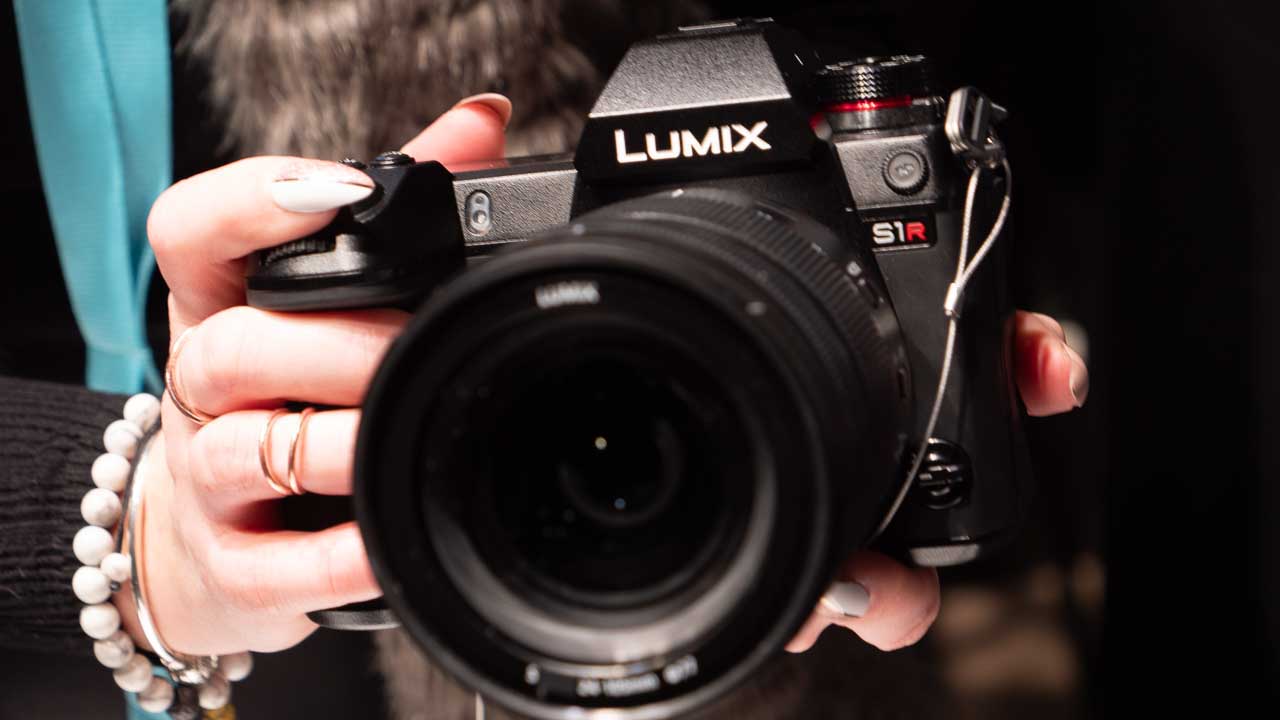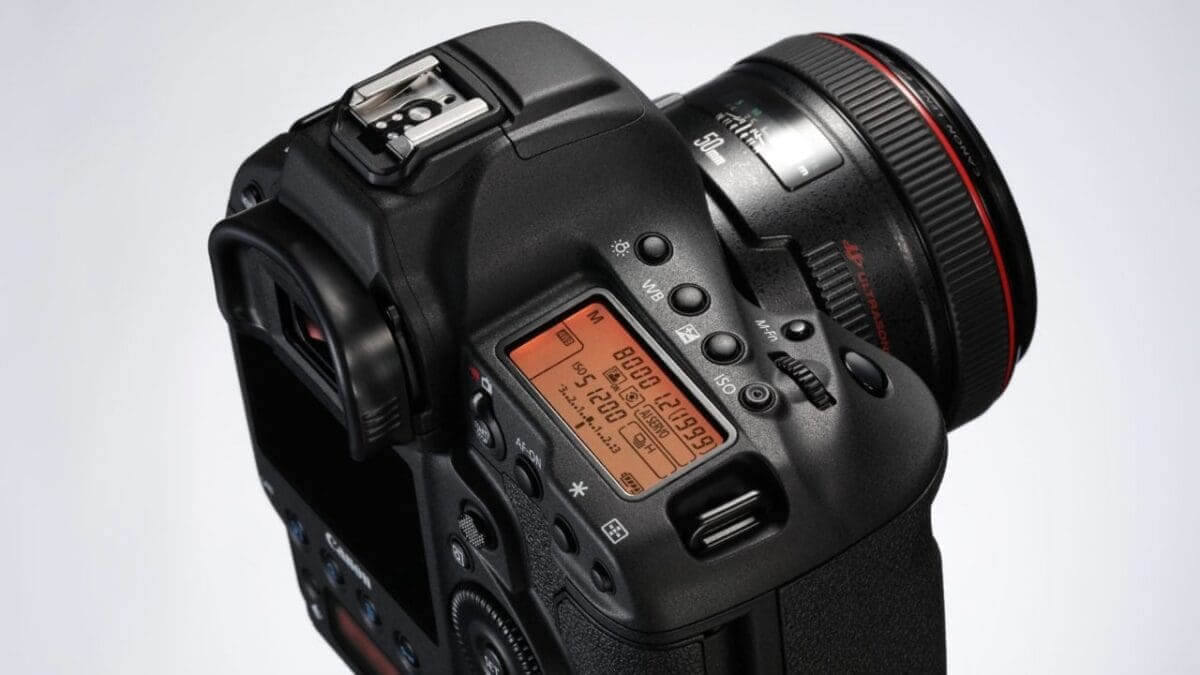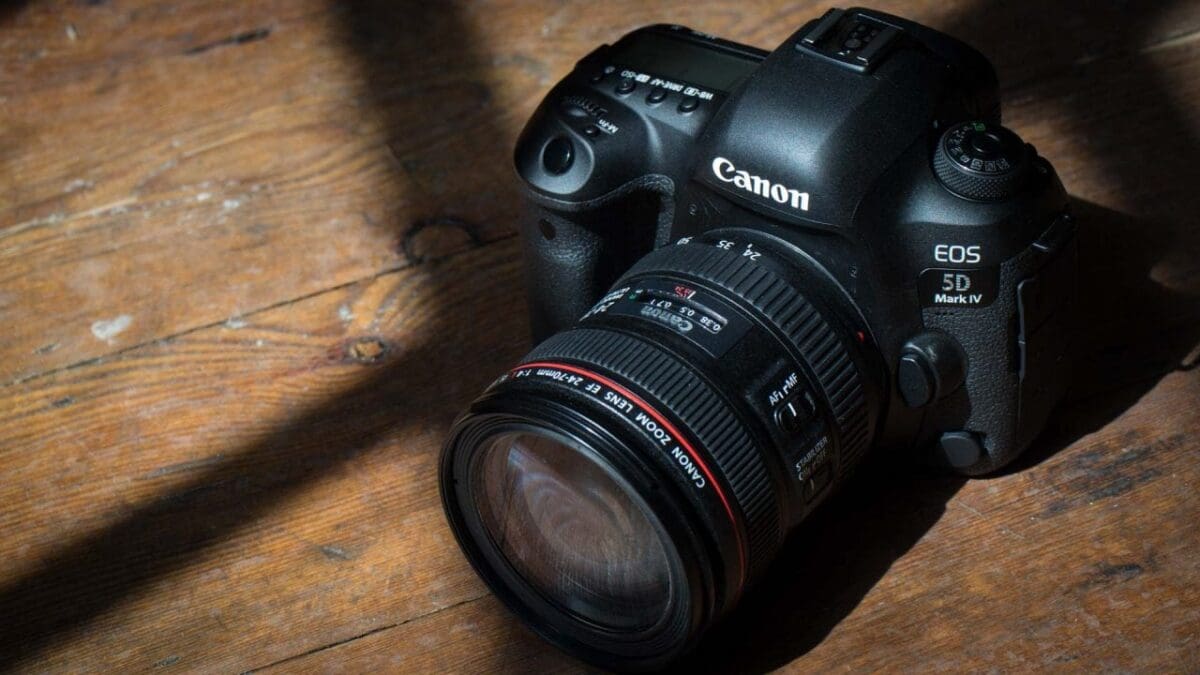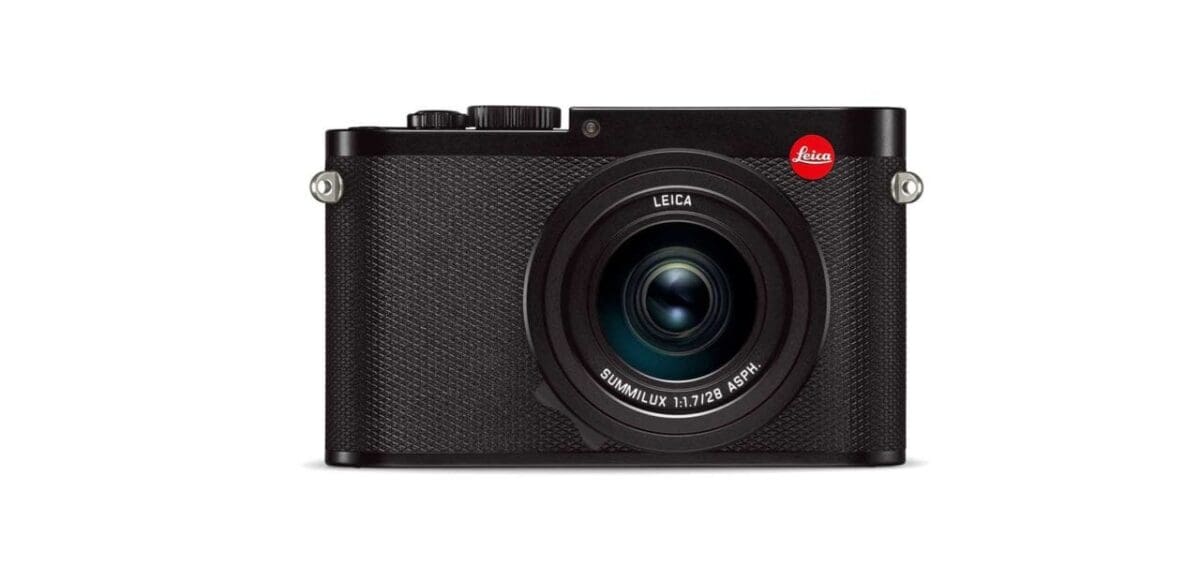Many photographers see full-frame as the sensor to aim for. Generally speaking, cameras with a full-frame sensor offer better image quality than those with smaller APS-C sensors, while still having the portability and ease-of-use that isn’t normally associated with medium and large format cameras.
Full-frame cameras are very expensive because the sensor is a huge part of the cost. However, there’s more choice than ever before, with a selection of cameras available to buy at more affordable prices than in the past. Where once full-frame was only the domain of the professional, cheaper prices mean that enthusiasts often plump for these models too.
Our round-up looks at the best of the full-frame models currently available on the market. We’ve got a selection of DSLR cameras and mirrorless models, but there’s also a compact camera which also packs a full-frame sensor.
We’ve looked at the cameras which offer a combination of high image quality and intuitive handling, while also considering their price point as well as their intended audience.
Read on to find out our pick of the bunch…

Nikon Z 7
Sensor: BSI CMOS | Megapixels: 45.7 | Lens Mount: Nikon Z | AF System: 493 points covering 90% of sensor Viewfinder: 0.5-inch EVF with 3.6million dots, 100% coverage, 0.8x magnification | Screen: 3.2-inch touch-sensitive tilting LCD, 2100k-dots | Max video resolution: 4K (3840 x 2160) Max frame rate: 9fps
Pros: High-resolution sensor, superb handling, Weatherproof
Cons: Single card port, Images slow to appear after shooting, Battery life not great
The Nikon Z 7 is the high-resolution full-frame mirrorless camera launched at the same time as the Nikon Z 6. And it’s a peach of a camera. It’s like a mirrorless Nikon D850 but in some cases the handling actually a little better.
It’s not really intended for sport but the AF system is fast enough and there’s just enough burst depth to make it work. The viewfinder is one of the best around, if not the best while the 3.2-inch screen has superbly implemented touch-control. It’s a joy to use but more importantly, the image quality is excellent. Even at ISO 25,600 noise is controlled very well and the dynamic range is huge.
If the Z 7 is a bit too pricey, or you don’t need such high resolution, check out the Nikon Z 6 which hasexactly the same build but a 24Mp sensor, slightly nippier focusing and a maximum continuous shooting rate of 12fps.

Panasonic S1, S1R
Panasonic’s first full-frame cameras offer a superb mix of high resolution and video capability
As with the S1 and its Micro Four Thirds cameras, Panasonic has used a contrast detection autofocus (AF) system in the Lumix S1R. This is claimed to have an impressively wide working range of -6Ev to 18Ev.
The AF system draws on the company’s Depth From Defocus (DFD) technology to speed the focusing. Combined with the high-speed communication afforded by the Lumix S series lenses, it delivers a claimed focus acquisition time of 0.8sec.
Artificial Intelligence is all the rage in photography at the moment, and Panasonic has employed it to help the S1 and S1R identify humans, cats, dogs and birds. Once the camera has identified one in the scene, it can focus on it.
Helpfully, you can press the joystick on the back of the camera to toggle through identified objects to select the one you want to focus on.
There are nine AF point selection modes on the S1: Face/Eye/Body/Animal Detection, Tracking, 225-Area, Zone (Vertical/ Horizontal), Zone (Square), Zone (Oval), 1-Area+, 1-Area and Pinpoint. I found 1-Area and 1-Area+ the most reliable.
However, the Face/Eye/Body/Animal Detection system does a good job of spotting those subjects in a scene. That’s indicated by a white box around them. A yellow box indicates the focus area. This is useful when there are several faces in the scene, you can just tap the one that you want to be the focus point to move the yellow box.

Nikon D850
A fantastic all-rounder which is hard to beat
Sensor: FX (full-frame)CMOS | Megapixels: 45.7 | Lens Mount: Nikon F | AF System: Multi-CAM 20K autofocus sensor module, 153 focus points (including 99 cross-type, of which 55 are available for selection) Viewfinder: Eye-level pentaprism (optical viewfinder), 100% coverage, 0.75x magnification | Screen: 3.2-inch touch-sensitive tilting LCD, 2359k-dots | Max video resolution: 4K Max frame rate: 7fps/9fps
Pros: High-resolution sensor, outstanding battery life, superb AF
Cons: Expensive, AF points clustered around the centre of the frame, slow Live View shooting
Possibly the most popular camera of 2017, the Nikon D850 is a great all-rounder which offers both enthusiasts and professionals a fantastic performance. The AF system is inherited from the top-of-the-line D5, while the 45.7 million pixel sensor allows for some superb detail reproduction.
The optical viewfinder is the largest ever found on a Nikon DSLR, while the tilting touch-sensitive screen comes in useful for certain subjects. Silent shooting is enabled when you use Live View, which is great for discreet shots where you need to be quiet.
Although not primarily aimed at sports and action photographers, 7fps gives you something to work with – and you can boost that to an even more usable 9fps by adding an optional battery grip. While the Sony A9 may have the D850 beat in some key areas (such as frame rate), for professionals working in the field, the D850’s battery life is so much more workable.
Overall the D850 gets our pick of the best full-frame camera for its fantastic versatility and high image quality, while being more affordable than the professional-level D5.

Sony A9
Still possibly the best camera in the world right now
Sensor: Stacked CMOS | Megapixels: 24.2 | Lens Mount: Sony FE | AF System: Hybrid AF; 693-point wide-area phase-detection, 425 points contrast detect | Viewfinder: 0.5-inch electronic viewfinder, 3,6m-dot, 100% coverage | Screen: 3-inch, 1.4m-dot, tilting, touch-sensitive Max video resolution: 4K | Max frame rate: 20fps
Pros: 20fps silent shooting, Small and lightweight
Cons: Comparatively poor battery life, expensive
No camera has caused more of a stir this year than the Sony A9. It offers a huge array of features that is turning the heads of even the most dyed-in-the-wool Nikon and Canon shooters. The most exciting – and useful – feature is the ability to shoot 20fps in full resolution, silently, and without any kind of black out in the (electronic) viewfinder.
For sports, wildlife and action photographers, this is a very special feature that makes it almost impossible to miss the definitive moment. Autofocus is also excellent, with a huge amount of points which are spread across the entire frame – something which you don’t get with DSLRs.
Of course, there has to be a downside, and in this case it’s battery life – professionals are going to need at least one spare if you want to make it through the whole day. You also need to be prepared to pay a pretty penny for the A9, while the lens and accessories range remains far more limited than the Canon and Nikon equivalents.

Sony A9 II
A superb follow-up to the original, which adds loads of connectivity
Sensor: Stacked CMOS | Megapixels: 24.2 | Lens Mount: Sony FE | AF System: Hybrid AF; 693-point wide-area phase-detection, 425 points contrast detect | Viewfinder: 0.5-inch electronic viewfinder, 3,6m-dot, 100% coverage | Screen: 3-inch, 1.4m-dot, tilting, touch-sensitive Max video resolution: 4K | Max frame rate: 20fps
The Sony A9 II retains the same stacked 24-megapixel full-frame sensor as its predecessor, the A9. However, Sony is promising more precision and faster operation thanks to the addition of its latest Bionz X processor.
The A9 II also retains the A9’s much-lauded 693-point phase detection AF system, which also includes 425 contrast AF points. It also incorporates Sony’s Real Time Eye-AF, Real Time Tracking and Fast Hybrid Focusing modes.
Some of the bigger changes in the A9 II vs the A9 are in its design, which includes new weather-proofing around the A9 II body should appeal to professional users. Sony has also reinforced the areas around ports and battery and memory card doors to prevent ingress of water.
Another new addition to the Sony A9 II is a built-in 1000BASE-T Ethernet terminal, enabling gigabit communication for high-speed data transfer.
The Alpha 9 II also adds a new Voice Memo function that allows users to attach voice memos to specific images that can be replayed when the images are reviewed.

Canon EOS 1DX Mark II
For sports and wildlife, this DSLR packs a serious punch
Sensor: Full-frame CMOS | Megapixels: 20.2 | Lens Mount: Canon EF | AF System: 61 point / 41 cross-type / 5 dual cross type at f/2.8 (all individually selectable) Viewfinder: Pentaprism (optical viewfinder), 100% coverage, 0.76x magnification | Screen: 3.2-inch fixed LCD, touch-sensitive, 1620k-dots Max video resolution: 4K | Max frame rate: 14fps
Pros: Superb AF, touch-sensitive screen
Cons: Large and heavy, high price
The Canon 1DX Mark II is perhaps the best-specced DSLR here if you’re a keen sports and/or wildlife photographer. With its precise autofocus system and a max frame rate of 14fps, you’ve got a lot to work with.
Like the Nikon D5, the 1DX Mark II is a big, heavy camera – but again, that extra size facilitates extended battery life and portrait grip controls.
The pixel count of the 1DX Mark II is modest, at 20.2, while image quality is very high. There’s not too much to choose between the 1DX Mark II and the Nikon D5, but it’s likely that you’ll already have your preferred brand if you’re in the market for a £5k camera and the 1DX Mark II is seriously impressive.

Nikon D5
A beast of a camera for professional or serious enthuasiasts
Sensor: FX (full-frame) CMOS | Megapixels: 20.8 | Lens Mount: Nikon F | AF System: Multi-CAM 20K autofocus sensor module, 153 focus points (including 99 cross type, of which 55 are available for selection) Viewfinder: Eye-level pentaprism (optical viewfinder), 100% coverage, 0.72x magnification | Screen: 3.2-inch fixed TFT touch-sensitive screen, 2359k-dots | Max video resolution: 4K | Max frame rate: 12fps
Pros: Fast frame rate, excellent autofocus
Cons: Large and heavy, expensive
If sports and action photography is your thing, the Nikon D5 is the Nikon DSLR of choice for you. It has a fantastic AF system, while the max frame rate of 12fps is great for capturing those key moments. The resolution is less than half that of the Nikon D850, but for professionals who need to send shots remotely, that can be a blessing as it keeps file sizes down.
The D5 is a real beast of a camera with a large body to match – but the square build of the camera gives you both class-leading battery life and an additional set of controls to use when shooting in portrait orientation.
For most enthusiasts, the high asking price of the D5 probably puts it out of reach, but for the ultimate work horse of a camera, you can’t go far wrong.

Canon EOS 5D Mark IV
A superb all-rounder well suited to a variety of subjects
Sensor: Full-frame CMOS | Megapixels: 30.4 | Lens Mount: Canon EF | AF System: 61 point / 41 cross-type / 5 dual cross type at f/2.8 (all individually selectable) | Viewfinder: Pentaprism (optical viewfinder), 100% coverage, 0.71x magnification | Screen: 3.2-inch fixed, touch-sensitive, 1620k-dots | Max video resolution: 4K Max frame rate: 7fps
Pros: 4K video, Dual Pixel AF
Cons: Screen is fixed, Slow frame rate
The 5D range has always proven popular with advanced enthusiasts and professionals looking for something which can cope well with a range of different subjects. The latest in the line, the Mark IV, brings with it a lot of interesting and useful specifications that make it well suited to somebody who doesn’t shoot any one thing in particular.
The autofocus system is inherited from the excellent 1D Mark IV, while the frame rate of 7fps may not be lightning fast, but is just about versatile enough to catch most subjects.
Videographers have long enjoyed using the 5D range, and to that end, the Mark IV is capable of recording 4K video and has a range of useful video functions. The 5D Mark IV’s party trick is Dual Pixel AF, which, when switched on, allows you to slightly adjust focus in post-production, something which could just save the odd shot or two.

Sony A7R IV
High shooting and high resolution – there’s a lot to like about this mirrorless marvel
Sensor: BSI full-frame sensor | Megapixels: 61 | Lens Mount: Sony FE | AF System: Hybrid with 567 phase detection AF points | Viewfinder: 0.5 type 5,760,000-dot OLED | Screen: Tilting 3-inch 1,440,000-dot touchscreen | Max video resolution: 4K with S-Log2/3, HDR Max frame rate: 10fps
Pros: High resolution, Fast frame rate
Cons: Battery life
61MP in a camera the size of the A7R IV is groundbreaking and ideal for any resolution junky.
What makes this camera remarkable is the fine balance of the features, size and build quality. The A7R IV feels from the outset that it has been designed as a workhorse.
Aside from the resolution, the specifications of the A7R IV and A7 III are close, but it’s the robustness of build that set the two cameras apart. Dials and port covers are all more robust and better suited to anyone out in the field or in the studio porting their camera into a computer for tethered shooting.
Landscape photographers can make use of the expanded sensitivity range of between ISO 50 to 320,000, for deep rich colour and detail to capture desert sands or utilise the cameras uppermost sensitivity when shooting the aurora borealis.
Back in the studio the hybrid AF system with 567 phase detection AF points will ensure pin-sharp portraits and all the control you’d expect from a pro camera.
Leica Q
Superb Leica full-frame quality in a compact and portable body – ideal for street photography
Sensor: Full-frame CMOS Megapixels: 24.2 | Lens: 28mm f/1.7 ASPH lens | AF System: Contrast-based, 49-point AF | Viewfinder: 3.68-m dot LCOS electronic viewfinder | Screen: 3-inch fixed touch-sensitive LCD, 1.04-m dots | Max video resolution: Full HD | Max frame rate: 10fps
Pros: Small body, great EVF and screen
Cons: No 4K, Expensive
Leica is a brand which many photographers aspire to own, with stylish body designs married with fantastic image quality. The Leica Q is ideal for street photographers looking for a small and discreet body, while still boasting a full-frame sensor. You also benefit from tactile controls, and a high-resolution viewfinder which is great to work with.
The fixed 28mm f/1.7 lens is great for street work, but is also useful for other subjects, such as landscapes. Optical image stabilisation is built-in, allowing you to shoot at slow shutter speeds handheld. This is by no means a cheap camera – especially given it is relatively niche, but for somebody who wants a compact body with a high-performing sensor, it’s a great choice.




